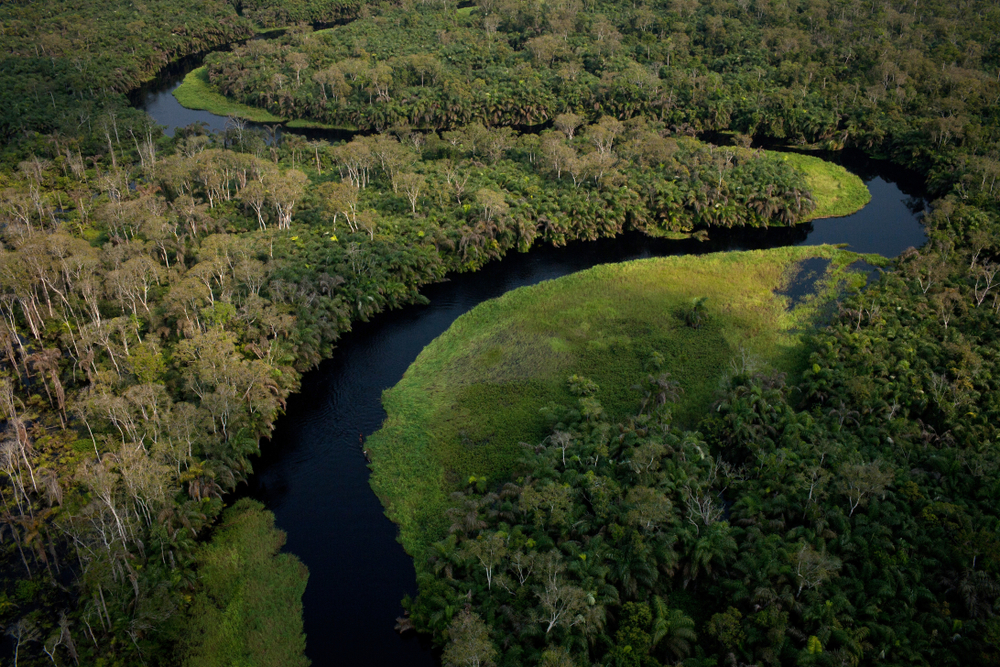
Understanding the Forest-Water Interactions in the Congo Basin
PROGRAM SUMMARY
The development objective of this project is to improve the understanding of forest-water interactions in the Congo Basin across World Bank project teams, client countries and climate scientists in Africa, and to strategize potential application to development programs and policies in the region. The analysis seeks to use emerging data and research to identify links between forest loss and degradation and water resources in the Congo Basin in the context of climate variability, covering impacts both locally and from a regional hydrologic cycle perspective.
CHALLENGE
The Congo Basin represents roughly 70% of Africa’s forest cover and is the second largest contiguous tropical forest in the world after the Amazon Basin. The Congo Basin provides many ecosystem services (carbon and non-carbon) but the forests are under pressure from economic activity such as logging, agriculture, energy, transport, and mining, and satellite-based data show that annual rates of deforestation have doubled since 1990 (World Bank 2013). Climate change is predicted to impact the Congo Basin significantly: since the 1950's, the region has experienced a 1°C increase in mean annual temperature (Niang et al. 2014; Fuller et al. 2018); by the 2080's, climate models suggest temperatures will increase 3 to 5°C and precipitation will decrease by 40% (Fotso-Nguemo 2016).
Understanding the impacts of forest loss within the Congo Basin and regionally is limited due to limited information on the linkages between forest loss and environmental services in the Congo Basin, particularly of the role of the forest in generating rainfall both locally and regionally. While much of the research related to the impact of tropical forests on rainfall and temperature has been undertaken in the Amazon, the few studies that have been conducted in the Congo Basin indicate that the region is a major source (17%) of moisture for West Africa (Cadet and Nnolli; Gong and Eltahir). One study estimates that the rain forests of West Africa may account for 30-40% of the annual rainfall in the Ethiopian highlands (Ellison 2018). Others suggest that the main source of rainfall in the Congo Basin is evaporation from the Great Lakes and that the Congo forest basin in turn generates much of the rainfall not only in the Congo basin (75-95%) (Brinkman 1983 in Job 1994) but also in the Sahel (van der Ent et al. 2010). At the same time, the drying trend in the Basin suggested by some scientific papers (Zhou et al. 2014) may impact this “water pump” service it provides. Such impacts are well described for the Amazon, where scientists have warned of an “Amazon dieback” or “savanization” of the Amazon (Vergara and Scholz 2011).
APPROACH
- The activity expanded the available evidence base through the production of an innovative online, interactive e-book. This e-book/knowledge portal houses both a data and analytics portal for the Congo Basin across numerous social, economic, and environmental themes; and a knowledge portal containing relevant literature, reports, investments, videos and programs in the Congo Basin.
- Community of Practice Formed. The team held numerous consultations (both in-person and virtually) with Bank teams working within the region, relevant academic experts, donor and other organizations. The CoP distribution list developed had over 200 people and is expected to be useful for the future as well.
- Two global virtual discussions undertaken. The first discussion session was held in September 2019 with over 50 participants; a smaller, more focused session was held in December 2019 with about 20-25 participants.
For stories and updates on related activities, follow us on twitter and facebook , or subscribe to our mailing list for regular updates.
Last Updated : 06-16-2024








